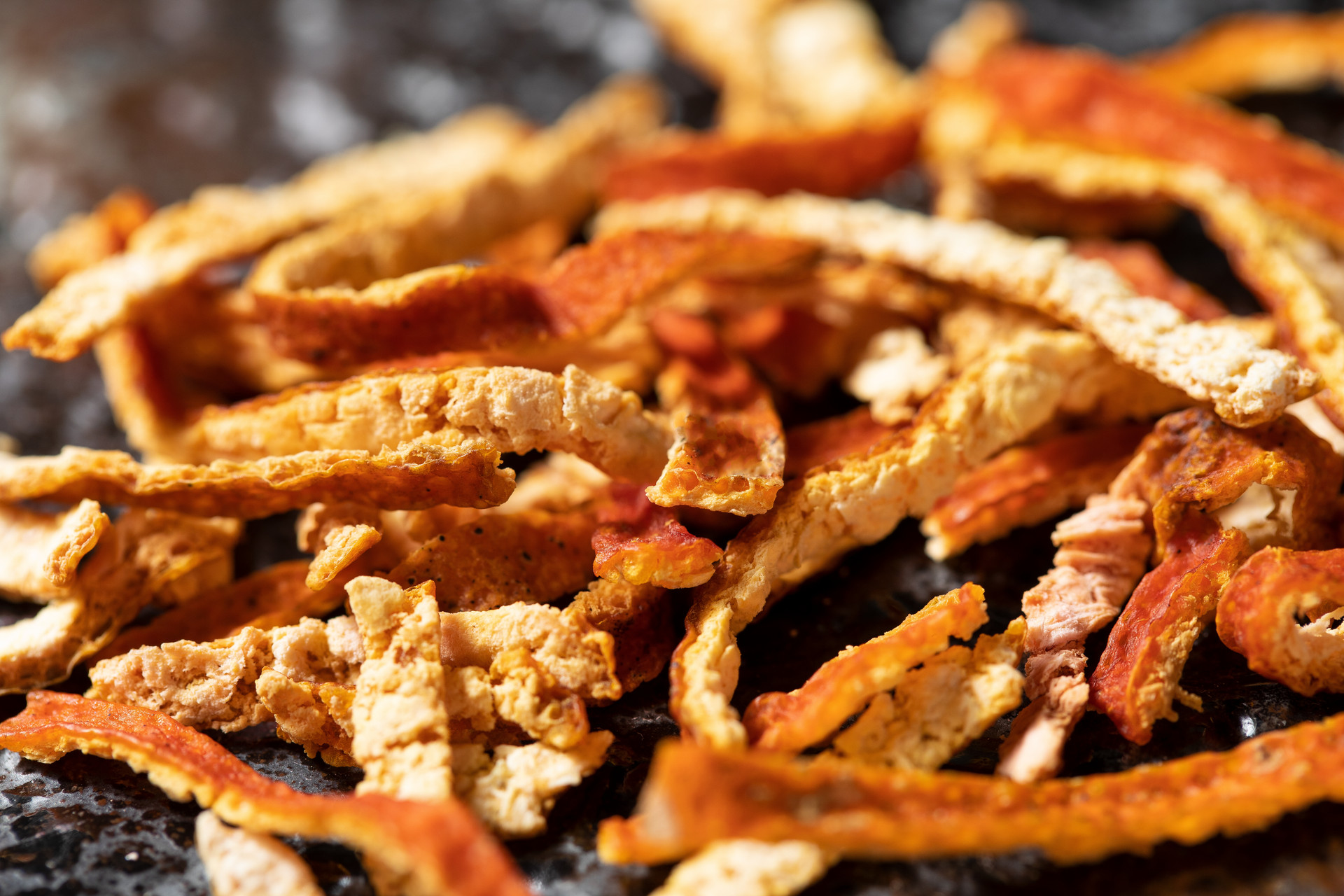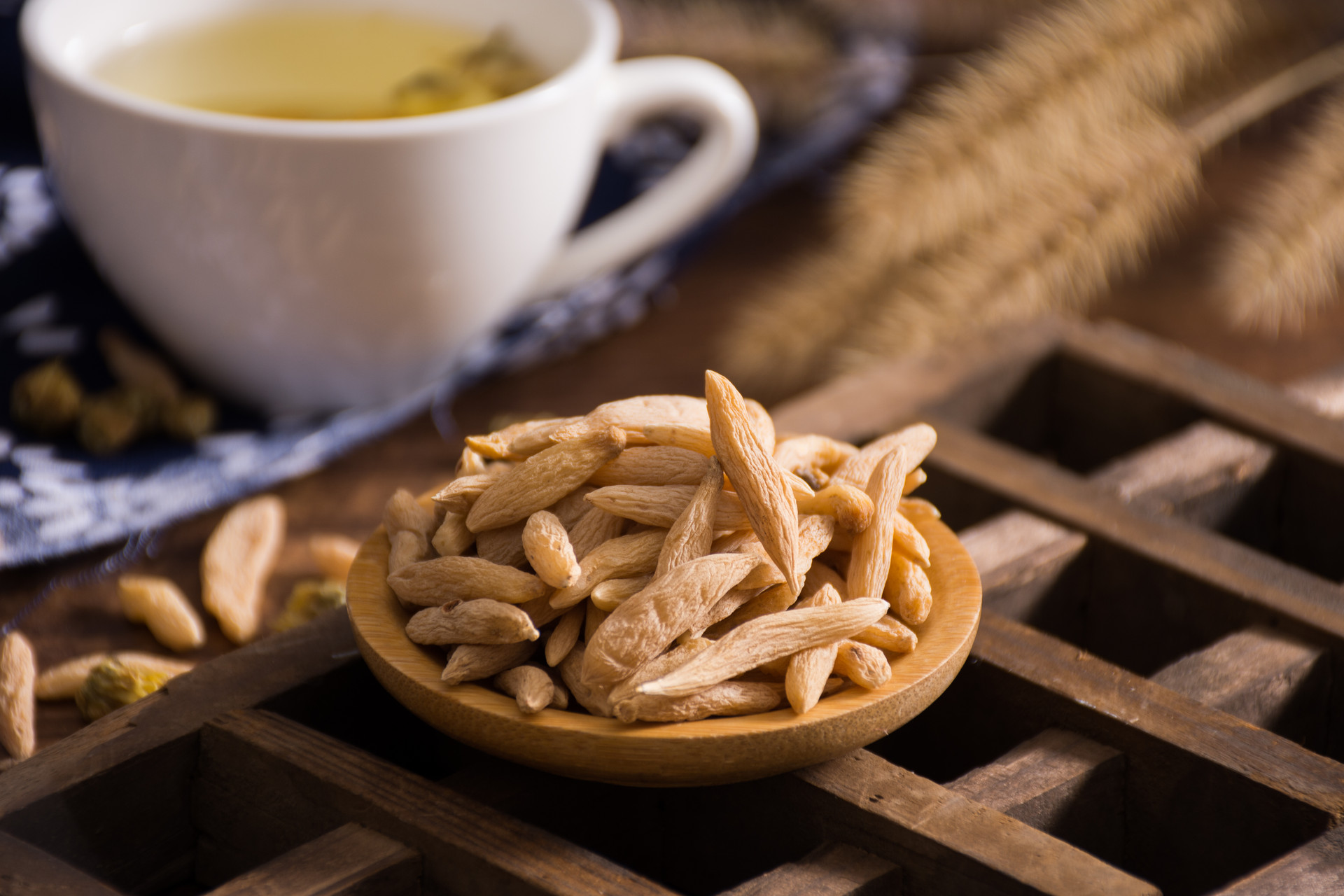
Chuan Niu Xi and Huai Niu Xi both have the function of promoting blood circulation and regulating menstruation, and they are often used together in clinical practice, so they are called "Er Niu Xi" (two Niu Xi). Although they have similar functions, there are still some differences between the two. Niu Xi refers to the roots of the Amaranthaceae plants Huai Niu Xi (Huai Niu Xi) and Chuan Niu Xi (Sweet Niu Xi). Huai Niu Xi is mainly produced in Henan; Chuan Niu Xi is mainly produced in Sichuan, Yunnan, Guizhou, and other places. Niu Xi is a perennial herb, 70-120 cm tall; the root is cylindrical, with a diameter of 5-10 mm, and soil yellow; the stem is angular or square, green or purple, with white appressed or spreading hairs, or nearly hairless, with opposite branches. The leaf blade is elliptic or lanceolate, a few are reverse lanceolate, 4.5-12 cm long, 2-7.5 cm wide, apex acuminate, 5-10 mm long, base wedge-shaped or broadly wedge-shaped, with appressed or spreading hairs on both surfaces; petiole is 5-30 mm long, with hairs. The spike-like inflorescence is terminal and axillary, 3-5 cm long, and bends back after flowering; the total pedicel is 1-2 cm long, with white hairs; the flowers are numerous, dense, and 5 mm long; the bracts are broadly ovate, 2-3 mm long, with long acuminate apex; the bracteoles are spine-like, 2.5-3 mm long, with curved apex, and each side of the base has a membranous small split, about 1 mm long; the perianth segments are lanceolate, 3-5 mm long, shiny, with acute apex and one central vein; the stamens are 2-2.5 mm long; the degenerate stamens have a flat round apex with slightly dentate serrations. The achene is rectangular, 2-2.5 mm long, yellow-brown, and smooth. The seed is rectangular, 1 mm long, yellow-brown. Flowering period is from July to September, and fruiting period is from September to October.
Niu Xi has a bitter, sour, and neutral taste. It enters the kidney and kidney meridian. It has the effects of promoting blood circulation and removing blood stasis, nourishing the liver and kidney, strengthening tendons and bones, promoting diuresis and relieving stranguria. It is suitable for menstrual disorders, dysmenorrhea, amenorrhea, postpartum stasis abdominal pain, contusions and strains, lumbar and knee soreness, weakness of the lower extremities, hematuria, difficult urination, painful urination, and other conditions caused by Qi stagnation and blood stasis. This herb can nourish the liver and kidneys, strengthen tendons and bones, and promote blood circulation and joint mobility. It has a good downward effect, so it can treat lower body soreness in the waist and knees, gynecological diseases such as stasis-induced amenorrhea, dysmenorrhea, irregular menstruation, postpartum abdominal pain, etc. "Compendium of Materia Medica" states that it can "treat chronic malaria, cold and heat, urinary tract infection, abdominal pain, diarrhea, sore throat, mouth ulcers, toothache, abscesses, wounds, and fractures." "Medical Revelations from the West" states that it "originally has nourishing effects but is good at promoting the flow of Qi and blood downward. Therefore, it is often used to treat kidney deficiency causing lumbago, leg pain that cannot be flexed or extended, leg pain that cannot move freely, women's amenorrhea, promoting childbirth and giving birth to the fetus, as well as treating urinary pain and promoting urination. These are all the effects of its good downward action."

From this, it can be seen that there are two types of Niu Xi, Chuan Niu Xi and Huai Niu Xi. Both of them have the functions of promoting blood circulation and regulating menstruation, nourishing the liver and kidneys, strengthening tendons and bones, promoting diuresis and relieving stranguria, and promoting the downward flow of Qi (blood). Chuan Niu Xi is better at promoting blood circulation and regulating menstruation, while Huai Niu Xi is better at nourishing the liver and kidneys and strengthening tendons and bones. Therefore, attention should be paid to the clinical use of these two herbs.
Pharmacological studies of Niu Xi have shown that this herb has a contraction effect on the isolated uterus of rabbits, whether pregnant or not pregnant, has a temporary hypotensive effect, and also has anti-inflammatory, analgesic, diuretic, and other effects, and can improve immune function. The root contains triterpene saponins, which are hydrolyzed to form oleanolic acid, as well as ecdysteroids, Niu Xi sterols, and purple stem Niu Xi sterols. It also contains polysaccharides, amino acids, alkaloids, and coumarins. The root also contains a large amount of potassium salts and substances such as betaine and sucrose. The ecdysteroids contained in Niu Xi have a strong effect on promoting protein synthesis. After oral or intraperitoneal administration of ecdysteroids to mice once, the precursor amino acids in the nuclei, mitochondria, and microsomes of mouse liver cells can be seen to increase after 2 hours, and the effect is stronger after 4 hours. Sucrose density gradient centrifugation analysis shows that the blood RNA after administration has twice the casting activity of the control blood, indicating that the protein synthesis effect of ecdysteroids is accompanied by the promotion of mRNA synthesis.
Now, I will introduce several treatment methods for your reference.
Xue Fu Zhu Yu Capsules (Chinese patent medicine): This formula consists of Tao Ren, Hong Hua, Chi Shao, Chuan Xiong, Zhi Qiao, Chai Hu, Jie Geng, Dang Gui, Di Huang, Niu Xi, Gan Cao, etc. It is taken orally. Take 6 capsules at a time, twice a day, for one month as one course of treatment. It can promote blood circulation, remove blood stasis, promote Qi circulation, and relieve pain. It is suitable for chest pain, long-term headache, fixed pain like a needle, internal heat and restlessness, palpitations, insomnia, irritability, and easy anger caused by Qi stagnation and blood stasis.
Qing Re San Miao Wan (Chinese patent medicine): This formula consists of Huang Bai, Cang Zhu, and Chuan Niu Xi. It is taken orally, 6-9g each time, twice a day. It can clear heat and dry dampness. It is suitable for damp-heat accumulation and anal eczema.
Du Huo Ji Sheng He Ji (Chinese patent medicine): This formula consists of Du Huo, Sang Ji Sheng, Qin Jiao, Fang Feng, Xi Xin, Dang Gui, Bai Shao, Chuan Xiong, Shu Di Huang, Yan Du Zhong, Chuan Niu Xi, Dang Shen, Fu Ling, Gan Cao, Gui Zhi, etc. It is taken orally, 15-20ml at a time, three times a day. It can nourish blood, relax tendons, dispel wind, and remove dampness, and nourish the liver and kidneys. It is suitable for wind-cold-damp blockage, deficiency of liver and kidneys, and Qi and blood deficiency causing arthralgia, with symptoms such as cold and pain in the waist and knees, difficulty in flexion and extension.
Ba Wei Tong Jing Pian (Chinese patent medicine): This formula consists of Chuan Niu Xi, Mu Dan Pi, Dang Gui, Bai Shao, Yan Hu Suo, Mu Xiang, Tao Ren, Gui Zhi, etc. It is taken orally, 5 tablets at a time, three times a day. It can promote blood circulation, regulate menstruation, dissolve stasis, and relieve pain. It is used for menstrual disorders, with purple clots, and abdominal pain during menstruation.
Niu Xi Congee: Take 10g of Niu Xi, 100g of rice, and an appropriate amount of sugar. Clean the Niu Xi and put it in a pot. Add an appropriate amount of water and soak for 5-10 minutes. After that, boil the water, take the juice, add rice to cook the congee. When the congee is cooked, add sugar to taste, and take it once a day. It can promote blood circulation and remove blood stasis. It is suitable for various types of pain, rheumatic pain, dysmenorrhea, postpartum abdominal pain, amenorrhea caused by Qi stagnation and blood stasis, etc.











